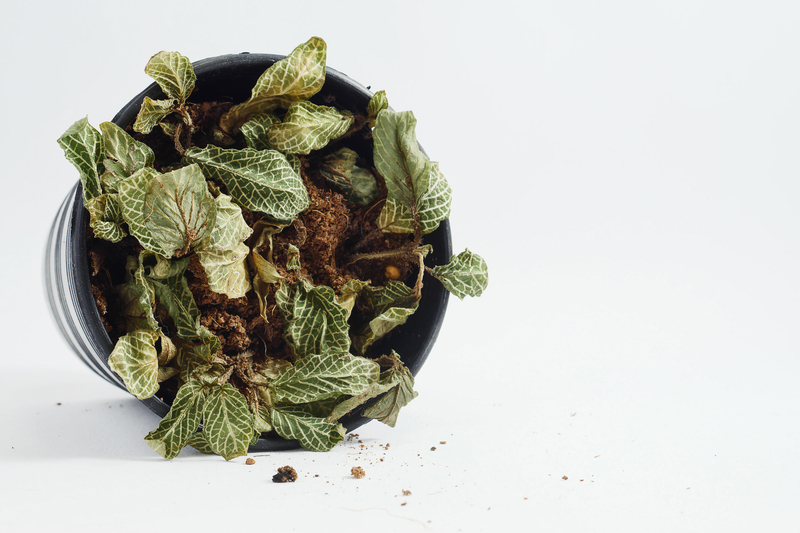Keep Your Lawn Healthy All Summer by Preventing Drought Stress
Summer is a crucial season for lawn care enthusiasts. When the heat rises, the risk of drought stress threatening your beautiful green carpet also increases. Understanding how to prevent drought stress is essential for maintaining a lush, healthy lawn all summer long. In this comprehensive guide, you'll learn what drought stress is, how it harms your grass, and effective strategies to protect your lawn and boost its resilience, even during prolonged dry spells.
What Is Drought Stress in Lawns?
Before diving into preventative measures, it's important to understand what drought stress actually means for your lawn. Drought stress occurs when your grass does not receive enough water to sustain healthy growth due to high temperatures, low rainfall, and excessive evaporation. This condition weakens grass roots, making your lawn susceptible to disease, pests, and unsightly brown patches.
Common Signs of Drought-Stressed Lawns
- Wilting or Footprinting - The grass blades lose their resilience, and footprints remain visible after walking on the lawn.
- Discoloration - Healthy green turns to blue-gray, then yellow or brown as drought stress intensifies.
- Slow Growth - Grass grows very slowly or not at all during drought periods.
- Increased Weed Invaders - Weeds may outcompete struggling turfgrass for scarce moisture.
- Soil Crusting or Cracking - Excessively dry soils can develop cracks, harming grass roots.

Understanding the Causes of Drought Stress
Several factors contribute to drought stress in lawns, not just a lack of rainfall. Recognizing these will help you act proactively:
- High Temperatures - Summer heat speeds up evaporation, causing soil to dry quickly.
- Windy Conditions - Wind increases moisture loss from both the soil and grass blades.
- Poor Soil Structure - Compacted or sandy soils don't retain water efficiently.
- Shallow Root Systems - Lawns with shallow roots are less able to access moisture during dry periods.
- Improper Mowing & Watering - Mowing too short and infrequent deep watering promotes drought problems.
How to Prevent Drought Stress for a Healthy Lawn
Prevention is always better than cure. With the right lawn care approach, you can keep your grass healthy and drought-resistant even during the hottest, driest weeks. Let's explore effective techniques for drought stress prevention:
1. Choose Drought-Resistant Grass Varieties
Start by choosing the right type of grass for your region. Some grass species are naturally more capable of surviving dry conditions. If you live in a drought-prone area or know your summers can be arid, consider these drought-hardy options:
- Bermuda Grass- Highly drought tolerant, great for warm climates.
- Zoysia Grass- Dense, resilient, and withstands periods of drought with minimal loss of color.
- Buffalo Grass- Extremely water-efficient, ideal for low-maintenance lawns.
- Tall Fescue- Deep-rooted and better adapted to summer dryness than other cool-season grasses.
- St. Augustine Grass- Performs well in hot, southern conditions with moderate drought resilience.
Tip: Consult with your local extension office or garden center to determine the best grass species for your climate and soil type.
2. Mow Properly to Reduce Drought Stress
Cutting your lawn too short increases water loss and exposes roots to heat. Follow best mowing practices for drought prevention:
- Raise Your Mower Blade - Keep grass at a height of 3-4 inches during summer. Taller blades shade soil and reduce evaporation.
- Mow Frequently but Gradually - Remove no more than one-third of the grass blade per mowing session to reduce stress.
- Keep Blades Sharp - Sharp mower blades create clean cuts, which heal faster and lose less moisture.
- Leave Clippings - Mulch-mowing leaves grass clippings that help shade the soil and return moisture and nutrients.
3. Water Wisely and Deeply
One of the most important factors in preventing drought stress is proper watering. Here's how to keep your lawn hydrated without wasting water:
- Water Early in the Morning - Watering before 9 a.m. reduces evaporation and allows grass to absorb moisture effectively.
- Deep, Infrequent Watering - Soak the soil to a depth of 6-8 inches, then wait until the turf shows signs of slight wilting before watering again.
- Avoid Light Frequent Watering - Shallow watering encourages shallow roots, increasing drought vulnerability.
- Adjust Sprinklers - Make sure sprinklers cover all areas and avoid watering sidewalks or driveways.
- Comply with Local Watering Restrictions - Efficient habits help comply with drought-related regulations while keeping your lawn healthy.
Rule of Thumb: Most lawns need about 1 inch of water per week, including rainfall. Measure with a rain gauge or empty tuna can left in the yard.
4. Improve Soil Quality and Structure
Healthy soil holds moisture better and supports resilient grass roots. Consider these soil improvement practices to beat drought:
- Core Aerate Your Lawn - Aeration relieves compaction, allowing water and air to penetrate deep into the root zone.
- Top Dress with Compost - A thin layer of compost adds organic matter, increases moisture retention, and encourages beneficial microbes.
- Test Your Soil - Check for nutrient deficiencies and pH imbalances. Amend as necessary for optimal grass health.
5. Mulch and Shade Where Possible
While your main goal is to keep your entire lawn healthy, certain areas may need extra protection:
- Mulch Bare Spots - Cover any exposed soil or garden beds near your lawn with organic mulch to retain moisture and reduce surface temperature.
- Plant Shade Trees Strategically - Shade reduces direct sunlight and can dramatically lower surface temperatures, benefiting grass beneath canopies.
6. Fertilize Carefully and Sparingly
Over-fertilization can worsen drought stress by encouraging fast, thirsty grass growth. To avoid this:
- Fertilize in Early Spring or Late Fall - Avoid fertilizing during summer drought periods.
- Use Slow-Release Fertilizers - These provide nutrients over time and are less likely to burn stressed grass.
- Follow Application Rates - Stick to recommended quantities for your grass type and lawn size.
7. Control Weeds and Pests Promptly
Weeds compete with your lawn for water and nutrients, while pests can exploit weakened grass. Stay vigilant by:
- Hand-pulling or Spot Treating Weeds - Minimize herbicide use during drought, as it can hurt already stressed grass.
- Monitoring for Insect Damage - Early detection allows safer, targeted management rather than broad pesticide applications.
Additional Strategies for Surviving Extended Drought
Sometimes, prolonged drought is inevitable. Here are expert strategies to ensure your lawn survives until rain returns:
Let Your Lawn Go Dormant (If Needed)
Many grasses recover after going dormant. If water restrictions prevent you from irrigating, let the grass turn brown and dry naturally--it's a survival strategy, not lawn death.
- Avoid Heavy Foot Traffic - Dormant grass is more susceptible to wear and tear.
- Resume Watering Gradually - Once rain returns or restrictions lift, water slowly to avoid shocking dormant grass.
Consider Lawn Renovation After Severe Drought
- Overseed Thin or Patchy Areas - Reseeding helps fill gaps and revitalize your lawn once conditions improve.
- Switch to More Drought-Tolerant Varieties - If portions continually fail, consider overseeding or sodding with tougher grasses as discussed above.

Frequently Asked Questions About Preventing Lawn Drought Stress
How can I tell the difference between drought and disease in my lawn?
Drought-stressed grass usually affects large areas and is accompanied by footprinting and a dry, crunchy feel underfoot. Diseases often create irregular patches with visible mold, slime, or unusual coloring. A professional lawn specialist can help with precise diagnosis if you're unsure.
Is it okay to water during midday heat?
It's best to avoid watering during the hottest part of the day, as much of the water will evaporate before it reaches the roots. Early morning is ideal.
Should I continue to mow my lawn during drought?
Reduce mowing frequency and raise your mower blade to the highest setting. Mow only when necessary and avoid adding extra stress to the lawn.
Will brown grass recover after drought?
Most established lawns can recover from moderate drought once water returns, thanks to their underground root reserves. If the sod rolls up easily like a carpet, however, the grass may have died rather than gone dormant and will need to be replaced.
Conclusion: Keep Your Lawn Green and Resilient All Summer
Preventing drought stress is a multi-faceted endeavor, but the rewards are well worth the effort. By choosing the right grass, watering wisely, mowing properly, improving soil, and caring for your lawn year-round, you will create a healthy, drought-resistant turf that can withstand summer's harshest conditions.
Be proactive--don't wait until dry patches appear to take action! Make use of these strategies to keep your lawn lush, green, and thriving--even through the hottest months. Not only will you enjoy a beautiful yard, but you'll also contribute to water conservation and a healthier environment. If you're unsure where to start, contact a trusted local lawn care professional for tailored advice.
Ready to Build a Stress-Resistant Lawn?
- Assess your lawn's current drought tolerance today!
- Plan now for consistent summer lawn care.
- Prevent drought stress, and enjoy a green oasis all season long.
For more expert lawn care tips, explore our site or subscribe to our newsletter. Stay green, stay resilient!